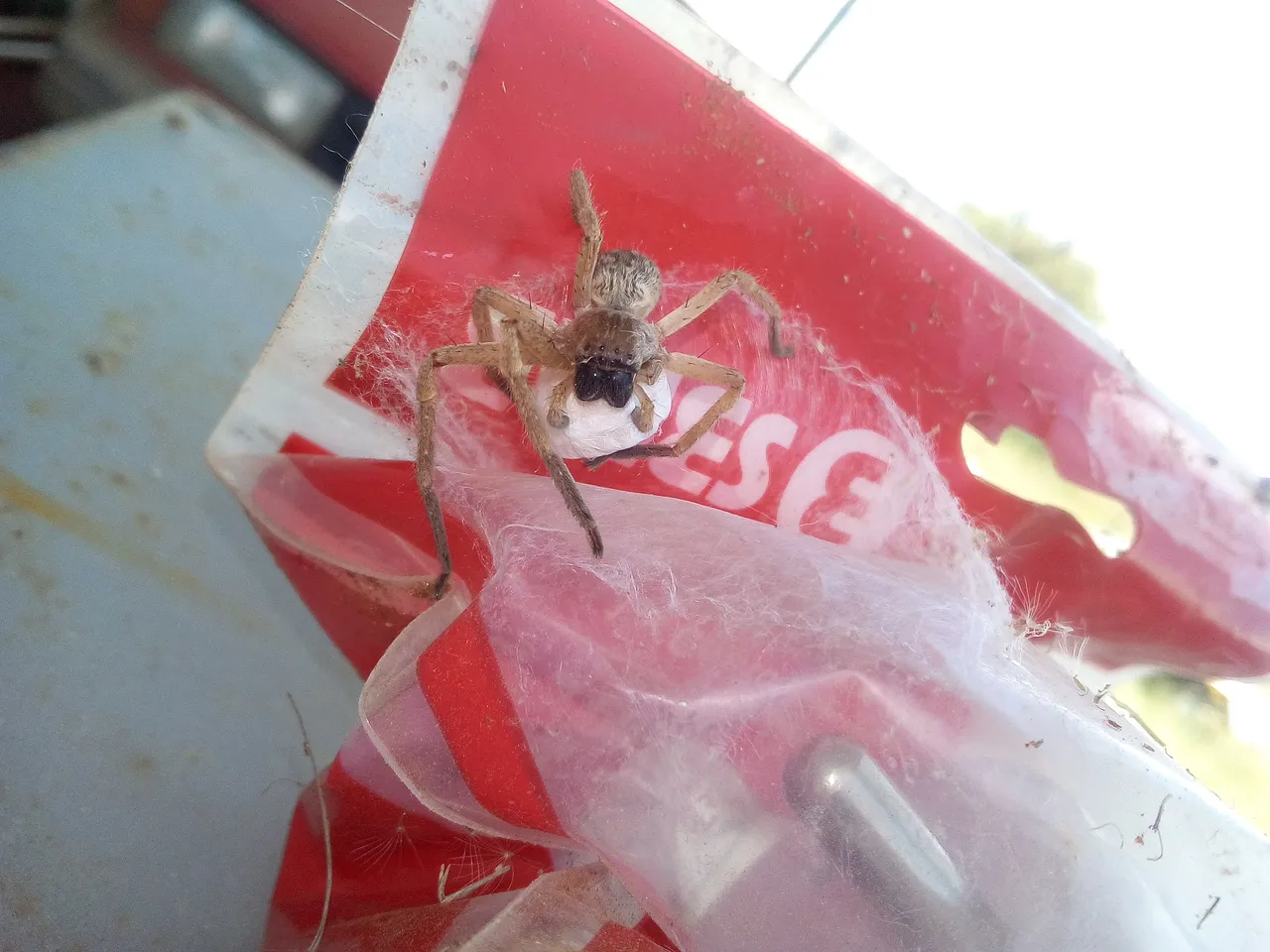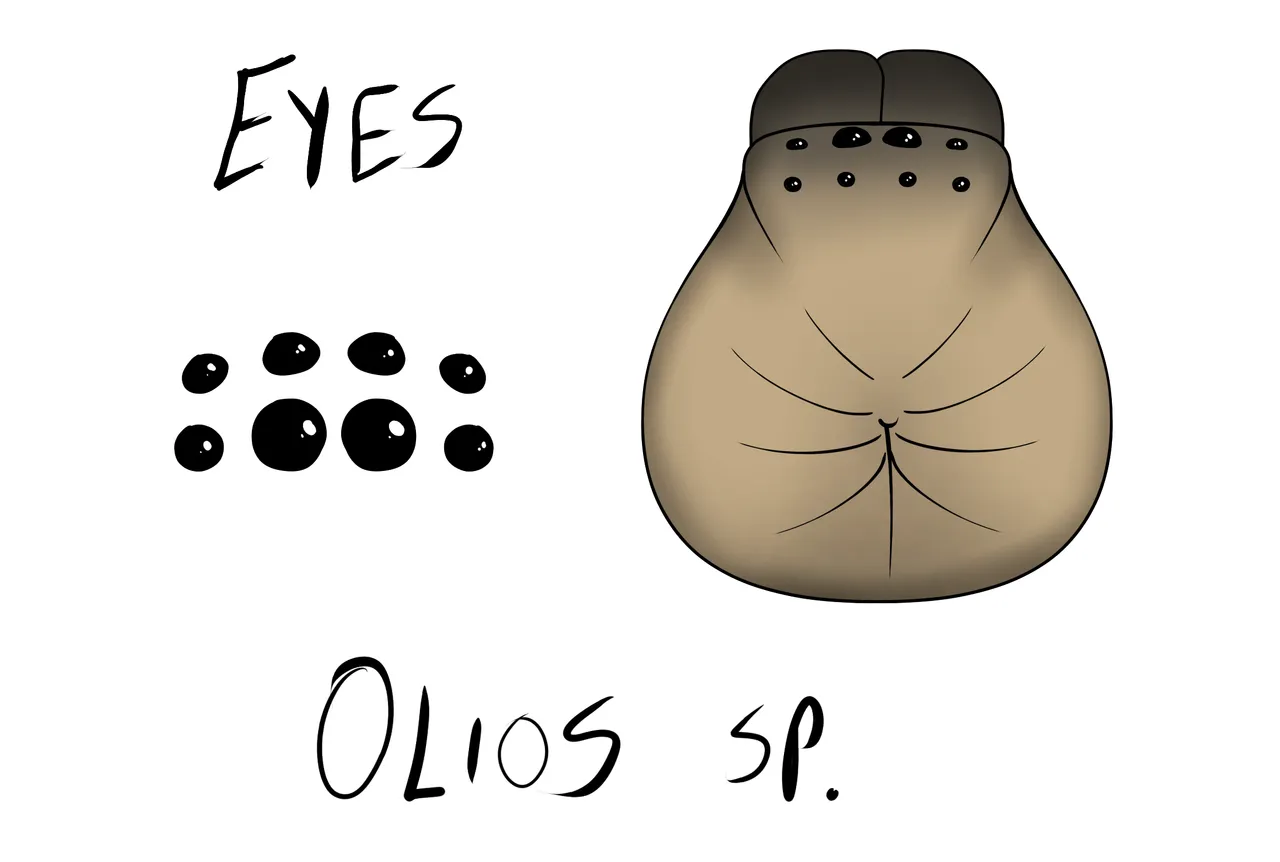Taxon:
- Class: Arachnida
- Order: Araneae
- Infra-Order: Araneamorph (true spiders)
- Family: Sparassidae
- Genus: Olios
- Species: O. sherwoodi
Female
Around 15mm in body length. Leg span of approximately 33mm diagonally.
Cephalothorax:
Wide, flat, mottled light brown carapace, dark around eyes and chelicerae. 2 neat rows of 4 eyes of which anterior median are larger.
Abdomen:
Egg-shaped abdomen with sharp posterior, light brown and mottled with darker chevron-like pattern tapering down dorsal centre.
Legs:
Pale, almost yellowish brown legs with darker metatarsus and tarsus. Prominent dark setae on femur and tibia. Second pair are slightly longer than first pair and the third leg pair is the shortest.
Male
About 9mm in body length. Leg span of approximately 23mm diagonally.
Male physical characteristics as in female but with dark, enlarged tarsus on pedipalps. Legs are thinner and longer, and the pattern on the dorsal abdomen is darker than in the female.
ABOUT THE GENUS
Olios huntsman spiders look a lot like their cousins, the rain spider (Palystes sp.), but they’re much smaller in size and leg span. They’re identifiable by their wide carapace and two neat rows of 4 eyes, of which the middle front ones are a little larger than the other eyes.
Olios is a diverse genus of huntsman spiders, and was often used as a sort of dumpster for newly described species to just place them 1. This is likely why the spiders in the Olios genus vary so greatly with their appearances. Also why this is the largest of the huntsman genera.
While not large, they’re quite adept at hunting and aren’t skittish, though they’ll run away if prodded or disturbed. Like with many spiders, Olios huntsman females tend to be larger than their male counterparts.
Olios spiders will make a silk retreat, usually between leaves or grasses, but sometimes also in the folds of artificial materials like cloth and plastic. The retreats are large cocoon-like structures and mainly seen housing females with eggs. Males tend to wander when mature, in search of females.



